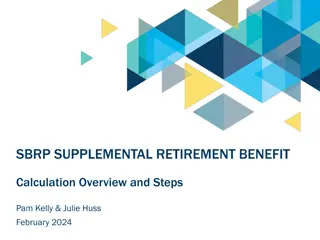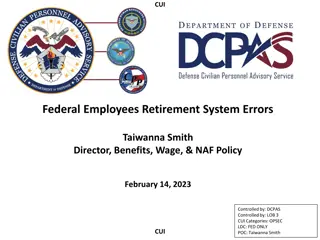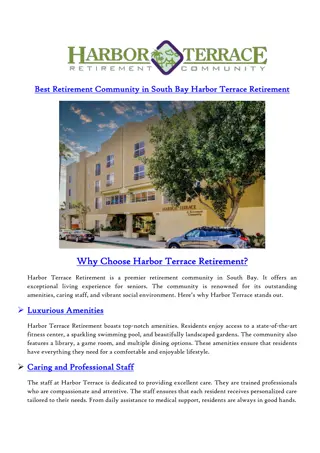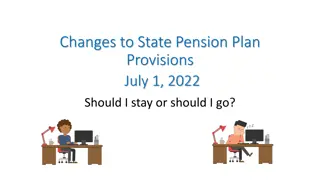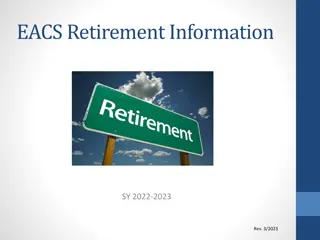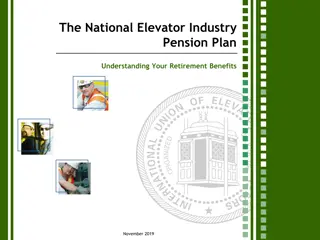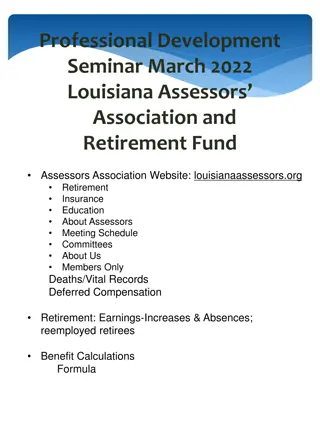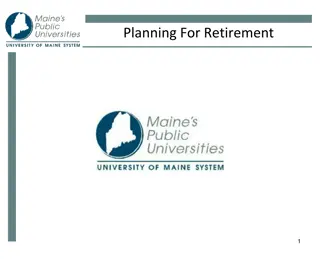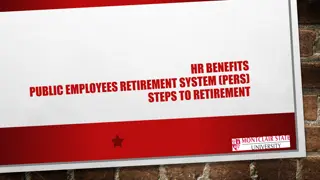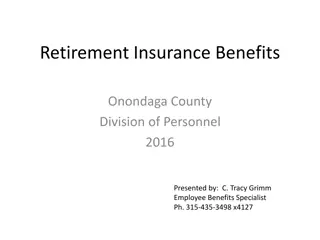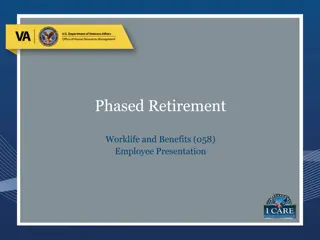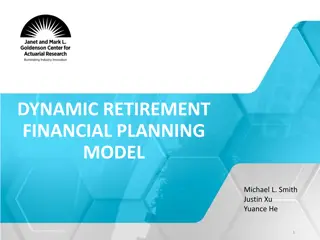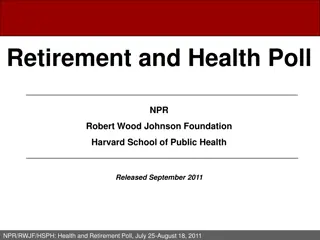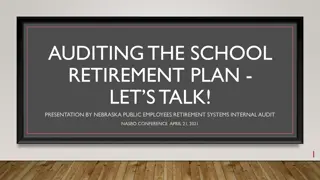Retirement Plan Details and Options for South Carolina State Employees
This presentation focuses on retirement plan details for different classes of members in the South Carolina Retirement System (SCRS) and Police Officers Retirement System (PORS). It covers defined benefit plans, defined contribution plans, and voluntary deferred compensation programs available for state employees. Information regarding eligibility requirements, plan provisions, employee contributions, and optional retirement programs is provided to help employees make informed decisions about their retirement savings.
Uploaded on Sep 13, 2024 | 0 Views
Download Presentation

Please find below an Image/Link to download the presentation.
The content on the website is provided AS IS for your information and personal use only. It may not be sold, licensed, or shared on other websites without obtaining consent from the author. Download presentation by click this link. If you encounter any issues during the download, it is possible that the publisher has removed the file from their server.
E N D
Presentation Transcript
Retirement plan details Retirement Orientation and Education Fiscal year 2025
Intended audience This presentation is focused on the eligibility requirements and plan provisions for Class Three members. Class Three members are those whose earned service began on or after July 1, 2012. Class Two members, those whose earned service began before July 1, 2012, are encouraged to review the summary flyers for Class Two on our Navigating Your Benefits webpage and retirement publications at peba.sc.gov/publications for more information. 2
Retirement plans Defined benefit plans South Carolina Retirement System (SCRS). Police Officers Retirement System (PORS). Offer lifetime retirement benefit, disability and death benefits. Defined contribution plan State Optional Retirement Program (State ORP). Benefit is balance in participant s account. Offers some death benefits. Deferred Compensation Program Voluntary, supplemental retirement savings plans. 3
Defined benefit plans SCRS and PORS are the two largest defined benefit plans PEBA administers. Plans bear the investment risk. Provides a monthly service retirement benefit based on a formula; must meet eligibility requirements to receive retirement benefits. Expect to receive about 50% of your preretirement income after reaching full service retirement eligibility if you choose the maximum benefit option. Work longer to increase your years of service credit. Purchase service credit. 4
Defined contribution plan State ORP is a 401(a) defined contribution plan. Alternative to SCRS for some employees. Employer contributes 5% to your account with your selected service provider. Benefit is based on accumulated account balance; any fees, distributions, and investment gains or losses will affect this balance. Eligible for distribution at termination from all covered employment or after age 59 . Employee assumes investment and longevity risk. 5
Employee contributions effective July 1, 2024 SCRS and State ORP PORS 9% 9.75% 6
South Carolina Deferred Compensation Program A voluntary, supplemental defined contribution program to help employees save additional money for retirement. Offers 401(k) and 457 plans. Elect to contribute before-tax or choose the Roth option to make after-tax contributions. Comparatively low fees. $10 minimum contribution to each plan per pay period. Local retirement plan advisors offering retirement awareness reviews, as well as assistance to participants nearing retirement and those already retired. Visit southcarolinadcp.com for more information. 7
Disclaimer This presentation does not constitute a comprehensive or binding representation of the employee benefit programs PEBA administers. The terms and conditions of the employee benefit programs PEBA administers are set out in the applicable statutes and plan documents and are subject to change. Benefits administrators and others chosen by your employer to assist you with your participation in these employee benefit programs are not agents or employees of PEBA and are not authorized to bind PEBA or make representations on behalf of PEBA. Please contact PEBA for the most current information. The language used in this presentation does not create any contractual rights or entitlements for any person. 8





